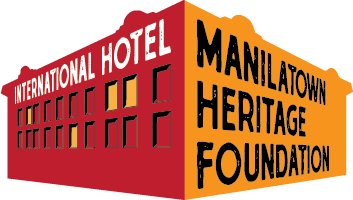Philippine mythology
Explore with Manilatown the Myths, the Magic, the Legends and the Creatures brought to life by Visual Artist Jeanette Lazam
Discover the rich tapestry of Philippine Mythology at the Manilatown Heritage Foundation's exhibition of drawings by San Francisco artist Jeanette Gandionco Lazam, where ancient gods, mystical creatures, and folk legends come to life. From Bathala, the all-powerful creator, to the bloodthirsty sigbin and the clairvoyant Dalikamata, these stories transcend time, offering profound insights into Filipino identity, values, and cultural heritage.
Despite the influence of Western ideologies and modern religious practices, the myths that shaped our ancestors' worldview still resonate today. These narratives, which explain natural phenomena and reflect timeless human emotions like love, jealousy, and courage, remind us of our shared past and offer bridges to the future.
In this exhibition, myths from ancient oral traditions are explored. Through art and storytelling, Philippine mythology is revitalized, ensuring these age-old tales continue to inspire and shape cultural understanding for generations to come.
Philippine Mythology Exhibition Program
We hope to see you here at this FREE Exhibition
Artist Statement
"You cannot understand, self-educate, self-study, and learn about a people's history and culture(s) unless you include their Mythology and Beliefs into the equation."
According to noted historian Jose Antonio Custodio, in pre-colonial times in the Philippines, "The Philippine definition of indigenous is not similar to how we know other countries tend to define it." Below he notes:
There was no massive settlement of Europeans in the Philippines unlike in the Americas and Australia.
There was no massive decimation or extreme marginalization of the native population which happened also in the Americas and Australia.
The Indigenous population in the Philippine colony thrived and increased to the tens of millions in the centuries that followed and despite having adopted colonial or other foreign customs still retained their physical features and languages
Therefore, in pre-colonial times and even decades after, the Philippine population in its entirety can be considered Indigenous with varying belief systems, languages, and customs that still thrive today.
My feeble attempt to capture Philippine Mythology, which in many ways reveals their belief systems rooted in the natural world brings to life those mythological deities and creatures our parents told us about.
Philippine Mythology also ties in with how and why the Filipino population during pre-colonial, colonial, and present-day understandings, endeavored to explain natural phenomena such as typhoons, floods, drought, sweltering heat waves, and the mystical creatures such as the Aswang, Mumu, Bakunawa, and Agta that scared little children and even adults.
I hope that everyone who visits the Philippine Mythology exhibit will walk away with more questions and a yearning to uncover how and why Philippine Mythology shaped Filipino history and belief systems.
Jeanette Gandionco Lazam, Artist


